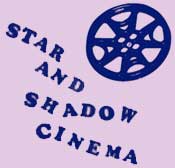Salo, or the 120 days of Sodom
Dir. Pier Paolo Pasolini, Italian with English subs, 1976
-
Sun 9 May 2010 // 19:30
/ Cinema
Please be aware: this film is generally seen as one of the most shocking and disturbing films of all times, featuring very strong images of violence and sex. Not for the fainthearted.
ABOUT
Here is an article with great information about the film, put together by Adrin Neatrour, one of the volunteers of the Star and Shadow Cinema
‘It is only at our moment of death that our life, to that point undecipherable, ambiguous, suspended, acquires a meaning.’ Pasolini Salo
Pasolini’s last film, is based on the Marquis de Sade’s 120 Days of Sodom. Like the book (not published until 1904) the film also experienced censorship and was banned in most countries, as indeed it still is.Salo’s significance is coloured by Pasolini’s brutal murder, his body burnt and mutilated, by a male prostitute shortly after the film’s completion. Conspiracy and teleological theories compete in trying to explain a death that remains a mystery.
On seeing the film I found it hard not to think about the state of mind of Pasolini when he went out to meet his death, the director who had just meticulously orchestrated this filmic take on the Theatre of Cruelty. Salo is a series of savage sadistic events unequalled until Michael Haneka’s Funny Games (both versions): no surprise that Haneka cites Salo as an important influence on his filmic thinking.
Pasolini's adaptation
Sade’s 120 days is transposed by Pasolini from revolutionary France to Salo, the fascist occupied portion of Italy in 1944, an area well known to Pasolini who actually lived there in 1944: Salo has a real provenance in Pasolini’s own experience. The film, like the book, is based on the idea that four fascist libertines accompanied by four middle aged prostitutes, kidnap 18 young people, nine of each sex.They proceed to lock them up and imprison them in a remote chateau where with their armed guards they subject the young victims to a series of degradations tortures and death.
The film’s narrative is divided into four acts, based loosely on Dante’s rings of hell in the Inferno: the Ante-Inferno, the Circle of Manias, the Circle of Shit, the Circle of Blood. Salo, like Sade’s book is premised on a mathematical logic. It takes place in an enclosed world, governed only by its own laws. However perverse it may appear it is ‘a pure world’.What takes place in this world is a series of operations, of increasing intensity, that are conducted not on ciphers but on bodies. Of course the operations are designed to reduce bodies to the status of ciphers, sites for the imposition of manipulation and power.
Corruption
Using Cinema as his blackboard, Salo is Pasolini as demonstrator of the theorem of the total corruption of society through inequality. Most evident in Fascism, but exactly the same forces at work in the Abu Ghraib Guantanamo, Bagram as well as the realms of BerluSconi SarKozy and BrOwn. With Pasolini the circuitry of amplification between the personal and the political is always evident: his own sexuality in constant mutual dialogue with his political instincts.
I think that the way Pasolini shot Salo was intended to make the film an experience the audience cannot deny. It is shot front on and full on, in effect incorporating the viewer into the film: trapped like the victims in the chateau. There is no escape, no lines of flight, either emotional or spiritual.
You dear viewer are IN the film and you must live thereafter with the consequences of this.
adrin neatrour
